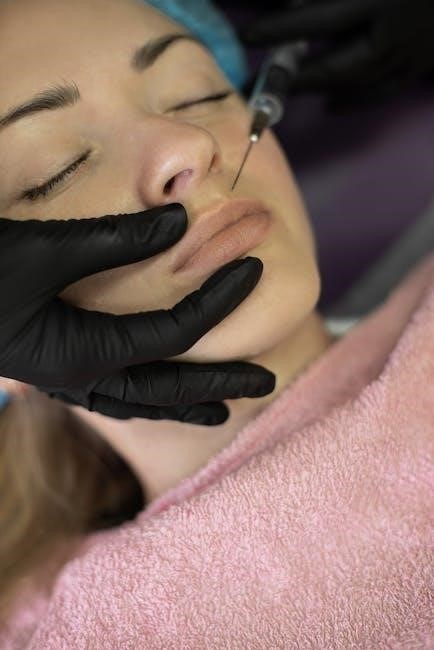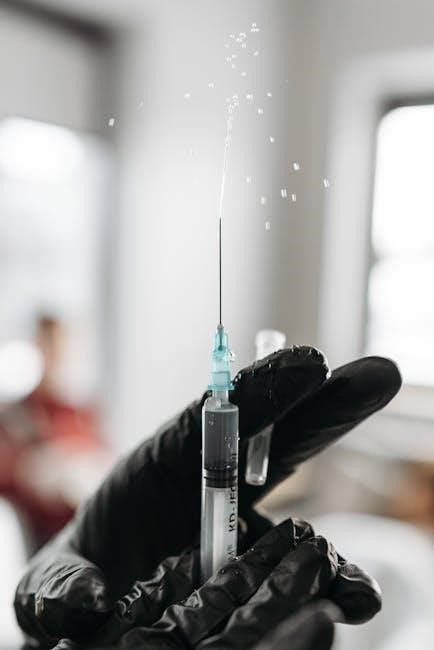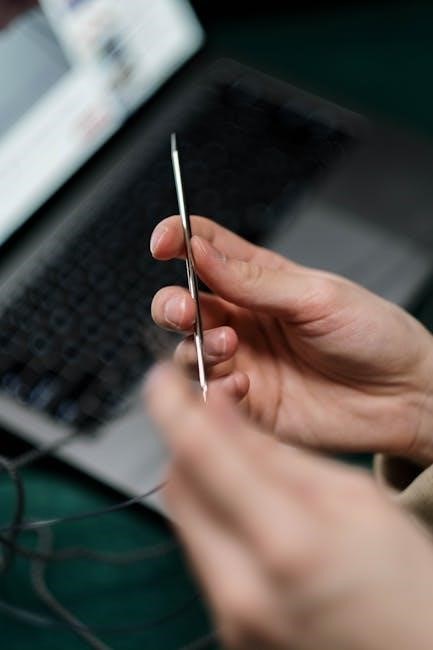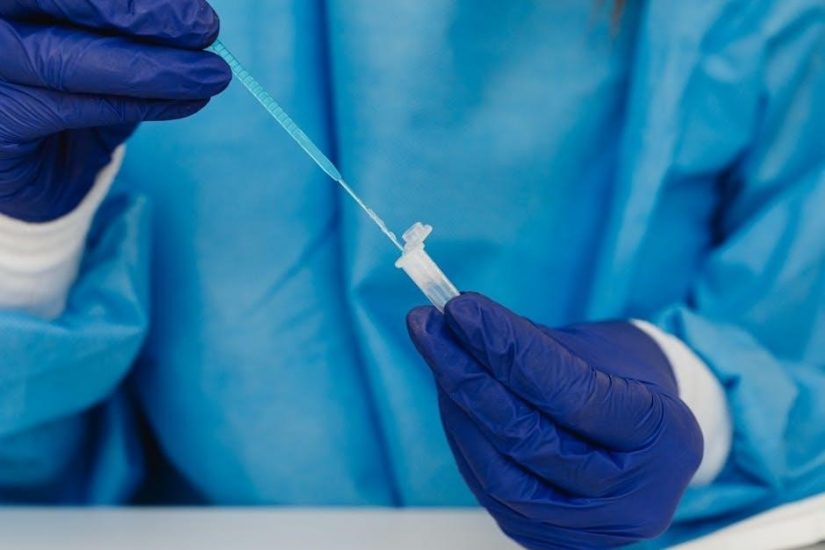This protocol outlines procedures for managing needle stick injuries, emphasizing immediate response, risk assessment, testing, post-exposure prophylaxis, and follow-up care to prevent bloodborne pathogen transmission․
Definition and Importance
A needle stick injury (NSI) refers to the penetration of the skin by a needle or other sharp object, potentially exposing individuals to bloodborne pathogens like HIV, hepatitis B, and hepatitis C․ It is a significant occupational hazard, particularly for healthcare workers, laboratory staff, and those handling sharps․ The importance of a needle stick injury protocol lies in its ability to guide immediate actions, risk assessment, and prophylaxis to prevent infection․ Timely intervention can significantly reduce the risk of disease transmission, ensuring the health and safety of exposed individuals․ This protocol is essential for minimizing occupational risks and promoting a safe working environment․
Scope and Application
The needle stick injury protocol applies to all healthcare workers, laboratory staff, and individuals handling sharps or potentially contaminated materials․ It is designed to minimize the risk of bloodborne pathogen transmission following an exposure incident․ The protocol is relevant in healthcare facilities, laboratories, and any setting where sharps are used․ It outlines procedures for immediate response, risk assessment, testing, and post-exposure prophylaxis (PEP)․ The scope extends to both occupational and non-occupational exposures, ensuring comprehensive coverage for all at-risk individuals․ Adherence to this protocol is critical for reducing the likelihood of infection and ensuring compliance with occupational safety and health regulations․ Proper training and awareness are essential for effective implementation․
Understanding Needle Stick Injuries
Needle stick injuries involve puncture wounds from needles or sharps, posing risks of bloodborne pathogen transmission․ They commonly affect healthcare workers, requiring immediate action to prevent infection․
Causes and Risk Factors
Needle stick injuries often result from improper handling of needles, recapping, or accidental punctures during medical procedures․ High-risk scenarios include rushed environments, insufficient training, and lack of safety devices․ Nurses, lab workers, and healthcare staff are at increased risk due to frequent needle use․ Poor infection control practices and inadequate sharps disposal systems also contribute․ The use of needles without safety mechanisms or protective equipment further elevates the risk․ Proper training, safety protocols, and the use of engineered sharps injury prevention devices can significantly reduce the likelihood of such incidents․ Understanding these causes and factors is crucial for developing effective prevention strategies․
Common Scenarios in Healthcare Settings
Needle stick injuries frequently occur during routine medical procedures, such as blood draws, injections, or surgery․ High-pressure environments, like emergency rooms, increase the likelihood of accidents․ Handling sharps near patients, especially during invasive procedures, is a common scenario․ Recapping needles or disposing of sharps improperly also pose significant risks․ Additionally, injuries may happen when passing sharps between healthcare workers or during unexpected patient movements․ These scenarios highlight the need for strict adherence to safety protocols and the use of safety-engineered devices to minimize risks in healthcare settings․
Immediate Response Protocol
Immediate steps include washing the injury with soap and water, reporting the incident, and seeking prompt medical evaluation to minimize exposure risks and ensure timely intervention․
First Aid Measures
Immediate first aid for needle stick injuries involves washing the affected area with soap and water․ Avoid using harsh chemicals or applying pressure․ The wound should not be squeezed or cauterized․ For mucosal exposure, rinse with water or saline․ The injured individual should report the incident promptly to initiate the exposure management process․ These steps aim to reduce the risk of bloodborne pathogen transmission and prepare for further medical evaluation and potential prophylaxis․ Proper wound care and avoidance of inappropriate measures, like tourniquet application, are crucial to prevent further complications․
Reporting and Documentation
Reporting and documentation are critical steps following a needle stick injury․ The incident must be immediately reported to a senior clinician or supervisor to ensure timely management․ A detailed incident report should be completed, including the circumstances of the injury, the source patient’s information, and the exposed individual’s details․ Documentation should also include the date, time, and location of the injury, as well as any subsequent actions taken, such as first aid, testing, and prophylaxis administered․ Proper documentation ensures accountability, facilitates legal compliance, and supports the continuity of care․ It also aids in tracking and analyzing incidents to improve prevention strategies within healthcare settings․

Risk Assessment and Testing
Risk assessment determines the likelihood of bloodborne pathogen transmission, guiding necessary testing and prophylaxis․ Source patient screening and exposure circumstances are critical in this evaluation process․
Evaluating Exposure Risk
Evaluating exposure risk involves assessing factors like the type of needle, source patient’s infectious status, and circumstances of the injury․ This step determines the likelihood of transmitting bloodborne pathogens such as HIV, HBV, or HCV․ The source patient’s serological status is crucial, and testing is recommended if consent is obtained․ The nature of the exposure, whether the needle was hollow or solid, and if it was used for vascular access, also influences risk․ Timely and accurate evaluation ensures appropriate interventions, such as post-exposure prophylaxis (PEP), are implemented․ Guidelines from health organizations emphasize the importance of this step in preventing occupational infections, ensuring worker safety and well-being․
Recommended Laboratory Tests
Following a needle stick injury, laboratory tests are essential to assess potential exposure to bloodborne pathogens․ The source patient should be tested for HBV, HCV, and HIV, provided consent is obtained․ The exposed individual should undergo baseline testing for these viruses to establish a reference point․ If the source is unknown or untested, the exposed person may still require baseline tests․ Follow-up testing is recommended at 6 weeks, 3 months, and 6 months post-exposure to monitor for seroconversion․ These tests are critical for determining the need for post-exposure prophylaxis and ensuring timely medical intervention if infection occurs․ Regular monitoring helps in early detection and management of potential infections․

Post-Exposure Prophylaxis (PEP)
Post-Exposure Prophylaxis involves urgent administration of antiretroviral medications to prevent HIV infection after needle stick injuries, ideally within hours of exposure, continuing for 28 days․
Indications and Timing
Post-Exposure Prophylaxis (PEP) is indicated for high-risk needle stick injuries involving exposure to blood or bodily fluids from HIV-positive or potentially infected sources․ Timing is critical, with PEP most effective when initiated within 2 hours of exposure․ The standard regimen duration is 28 days, with medications prescribed based on the source patient’s viral status․ PEP is not recommended if the injury occurred more than 72 hours prior․ Immediate initiation is essential, even before laboratory confirmation, to maximize efficacy․ Regular monitoring for adverse effects and follow-up testing for HIV, HBV, and HCV are required to ensure safety and assess infection risk․ Early consultation with infectious disease specialists is advised for complex cases․
Administration and Monitoring
Post-Exposure Prophylaxis (PEP) should be administered as soon as possible, ideally within 2 hours of exposure․ The standard regimen includes antiretroviral medications such as Tenofovir/Emtricitabine combined with Raltegravir or Dolutegravir․ The full 28-day course must be completed to ensure efficacy․ Medications should be dispensed directly from the pharmacy or designated areas, such as emergency drug cupboards, to avoid delays․ Monitoring includes regular follow-ups to assess medication adherence, manage side effects, and conduct blood tests for HIV, HBV, and HCV at 3 and 6 months post-exposure․ Documentation of the injury and treatment is crucial for medical records and further care coordination․ Immediate reporting to senior clinicians is recommended for complex cases or adverse reactions․

Follow-Up and Support
Regular medical check-ups, psychological support, and counseling are essential for individuals post-exposure․ Documentation and monitoring ensure comprehensive care and prevent long-term health complications effectively․
Medical Follow-Up Procedures
After a needle stick injury, medical follow-up is critical to ensure the health and safety of the exposed individual․ Regular medical check-ups are scheduled to monitor for signs of infection, such as HIV, hepatitis B, or hepatitis C․ Blood tests are conducted at intervals, typically at baseline, 6 weeks, 3 months, and 6 months post-exposure, to detect seroconversion․ If post-exposure prophylaxis (PEP) was administered, its efficacy is assessed, and any side effects are managed․ Documentation of all medical procedures, test results, and follow-up appointments is maintained for legal and health monitoring purposes․ This comprehensive approach ensures timely intervention and minimizes long-term health risks․
Psychological Support and Counseling
Psychological support and counseling are essential components of needle stick injury management․ Exposure to bloodborne pathogens can cause significant stress, anxiety, or even trauma․ Counseling services are provided to address emotional distress, reduce fear of infection, and promote mental well-being․ Trained professionals offer confidential support to help individuals cope with the incident and its aftermath․ Education on the risks and probabilities of infection is also provided to alleviate concerns․ Referrals to specialists, such as psychologists or psychiatrists, are made if necessary․ The goal is to ensure the individual’s emotional and mental health are supported throughout the follow-up period․

Prevention Strategies
Preventing needle stick injuries involves using safety devices, proper training, and safe handling practices to minimize risks and ensure a secure working environment for healthcare professionals․
Safety Devices and Engineering Controls
The use of safety devices and engineering controls is critical in preventing needle stick injuries․ Safety syringes with retractable needles or protective shields reduce accidental pricks․ Needleless connectors and closed medication systems minimize exposure during fluid transfers․ Engineering controls, such as sharps containers placed in accessible areas, ensure proper disposal of needles․ Additionally, safety-engineered devices like self-sheathing needles and blunt-tipped suture needles further mitigate risks․ Regular maintenance and updates to these devices are essential to maintain their effectiveness․ Training on the proper use of safety devices is also vital to ensure they function as intended, creating a safer environment for healthcare workers․ Proper implementation of these measures significantly reduces the incidence of needle stick injuries․
Training and Education
Comprehensive training and education are essential for preventing needle stick injuries and ensuring proper protocol adherence․ Healthcare workers should receive regular training on safe needle handling, use of safety devices, and proper disposal techniques․ Educational programs should cover the risks associated with needle stick injuries, methods to minimize exposure, and the importance of immediate reporting․ Practical sessions on using safety-engineered devices and emergency procedures are crucial; Employers must ensure all staff are trained and updated on the latest guidelines and protocols․ Continuous education reinforces safety practices, reducing the likelihood of injuries and ensuring timely, effective responses when incidents occur․ Regular refresher courses are recommended to maintain compliance and awareness․
